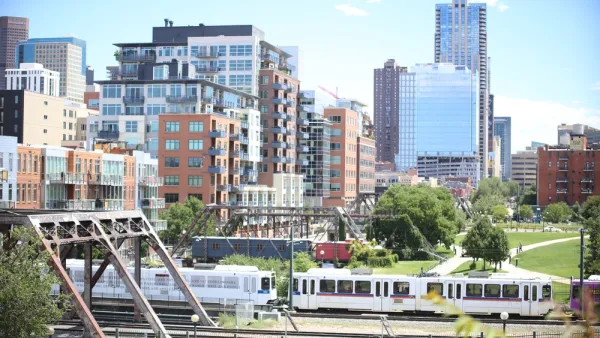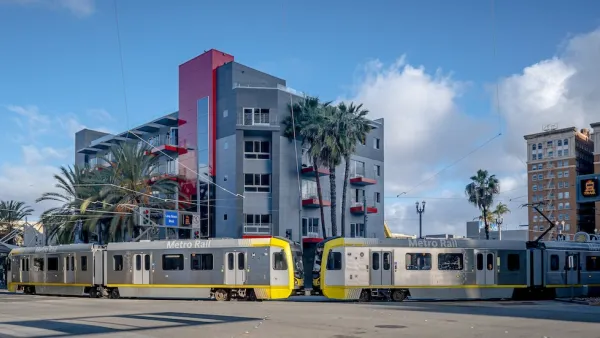Denver is confronting a dilemma facing many cities as they build out their transit systems: what types of uses should be developed in close proximity to stations, and who should these facilities serve.
In Denver, which is implementing a $7.4 billion expansion of its rail system, planners are revisiting assumptions about who should be served by transit stations, and the developable land around them, reports Kris Hudson. "In 1994, planners built parking lots and garages around many of its stations to cater to commuters," but now, planners and officials are looking "to encourage the development of dense, walkable villages around stations so people don't have to drive to use the system."
As a result, "Denver-transit planners now are becoming more flexible when it comes to
how much parking they require near rail stops and where they put it," in an effort to "rectify what some see as a flaw in the original concept."
Although a more sophisticated siting of parking is becoming common in Denver's peer cities, "Critics ask whether Denver's change in approach on parking will chase
some riders away rather than attract them," notes Hudson.
"So, they're going to make it
more difficult to use transit in hopes that the real-estate speculators
who use public money to build these things can flourish?" asks Jon
Caldara, president of the Independence Institute, a think tank in
Denver.
Thanks to Daniel Lippman
FULL STORY: Denver Rethinks the Modern Commuter

National Parks Layoffs Will Cause Communities to Lose Billions
Thousands of essential park workers were laid off this week, just before the busy spring break season.

Retro-silient?: America’s First “Eco-burb,” The Woodlands Turns 50
A master-planned community north of Houston offers lessons on green infrastructure and resilient design, but falls short of its founder’s lofty affordability and walkability goals.

Delivering for America Plan Will Downgrade Mail Service in at Least 49.5 Percent of Zip Codes
Republican and Democrat lawmakers criticize the plan for its disproportionate negative impact on rural communities.

Test News Post 1
This is a summary

Test News Headline 46
Test for the image on the front page.

Balancing Bombs and Butterflies: How the National Guard Protects a Rare Species
The National Guard at Fort Indiantown Gap uses GIS technology and land management strategies to balance military training with conservation efforts, ensuring the survival of the rare eastern regal fritillary butterfly.
Urban Design for Planners 1: Software Tools
This six-course series explores essential urban design concepts using open source software and equips planners with the tools they need to participate fully in the urban design process.
Planning for Universal Design
Learn the tools for implementing Universal Design in planning regulations.
EMC Planning Group, Inc.
Planetizen
Planetizen
Mpact (formerly Rail~Volution)
Great Falls Development Authority, Inc.
HUDs Office of Policy Development and Research
NYU Wagner Graduate School of Public Service





























